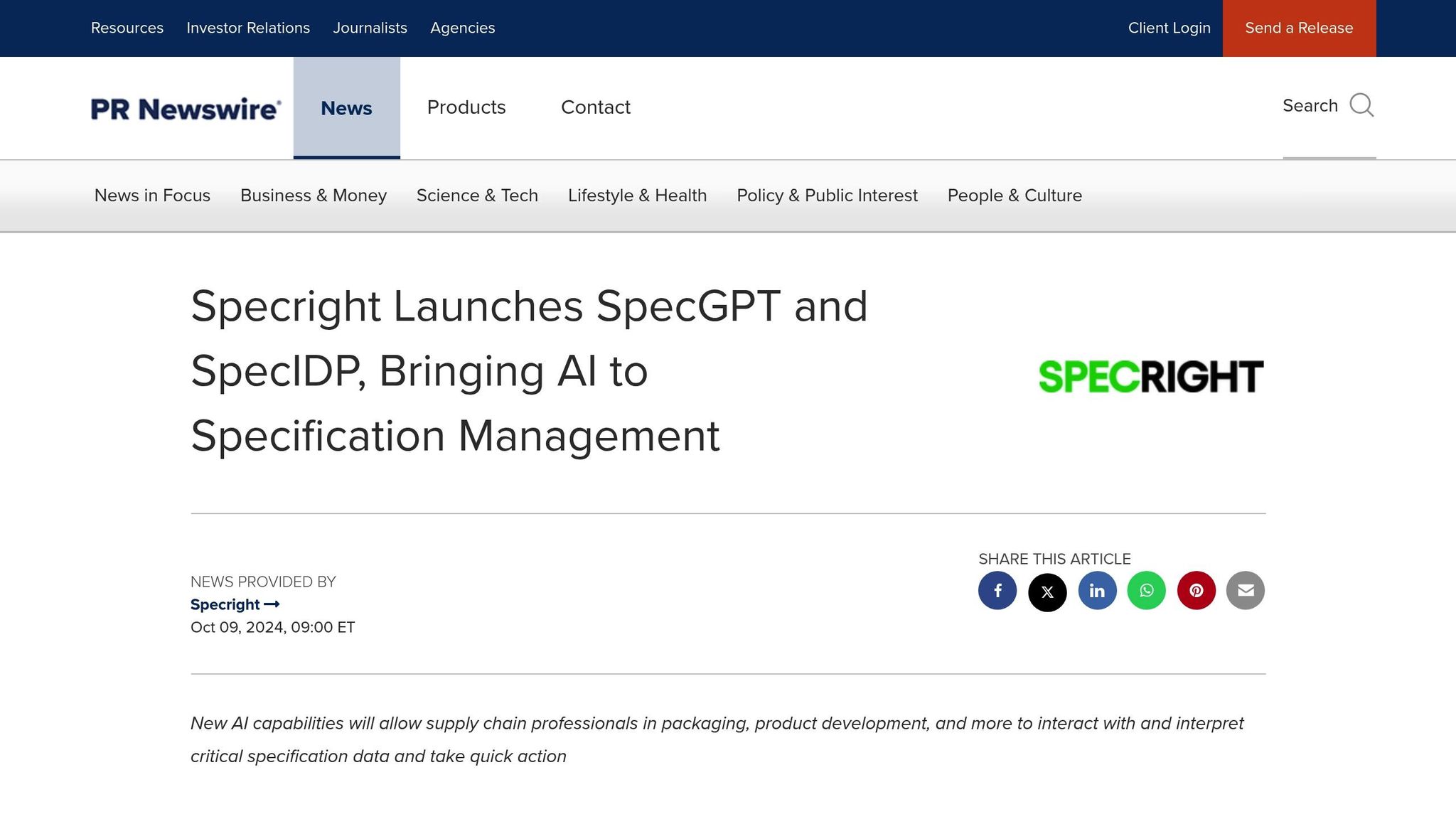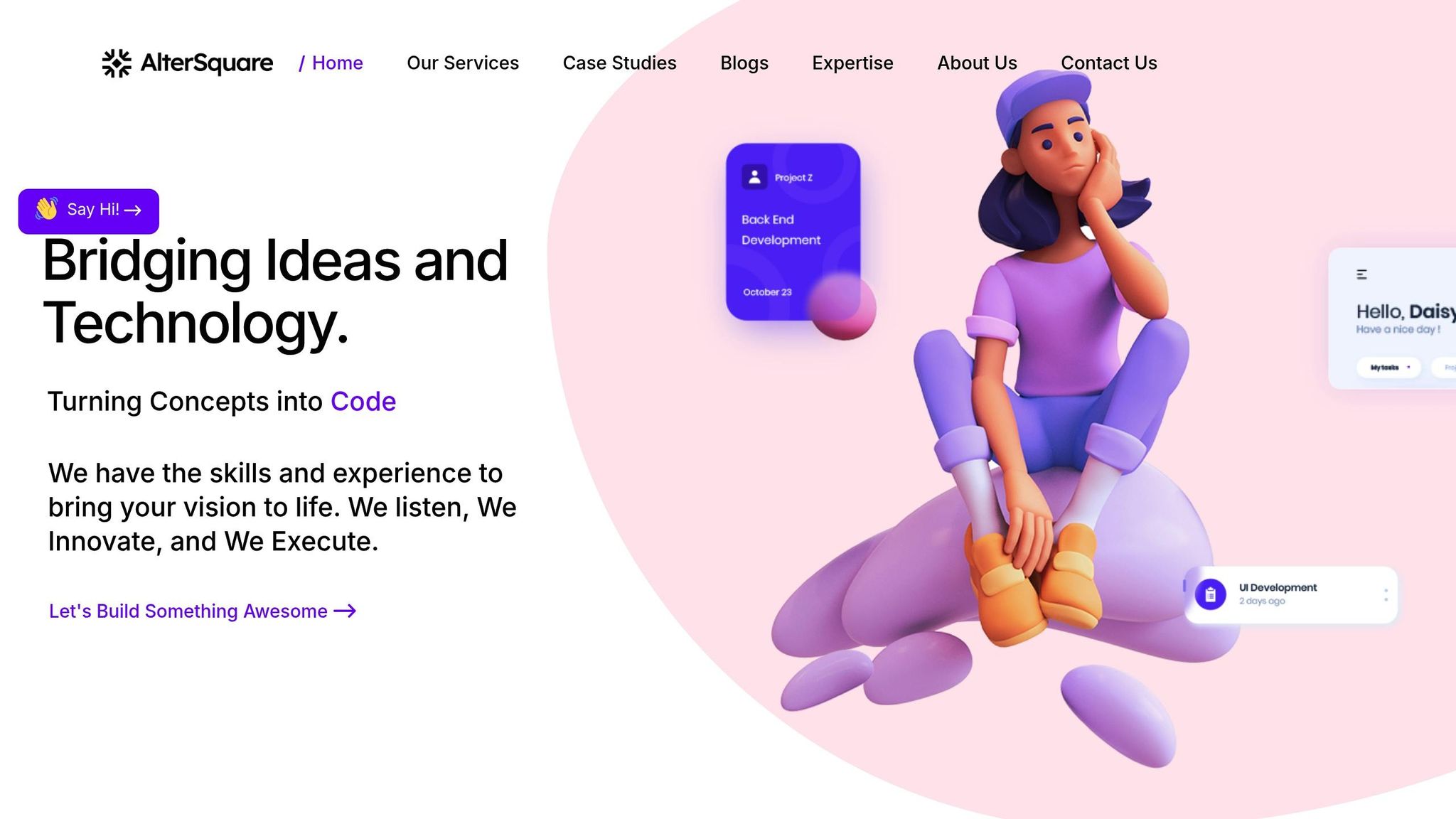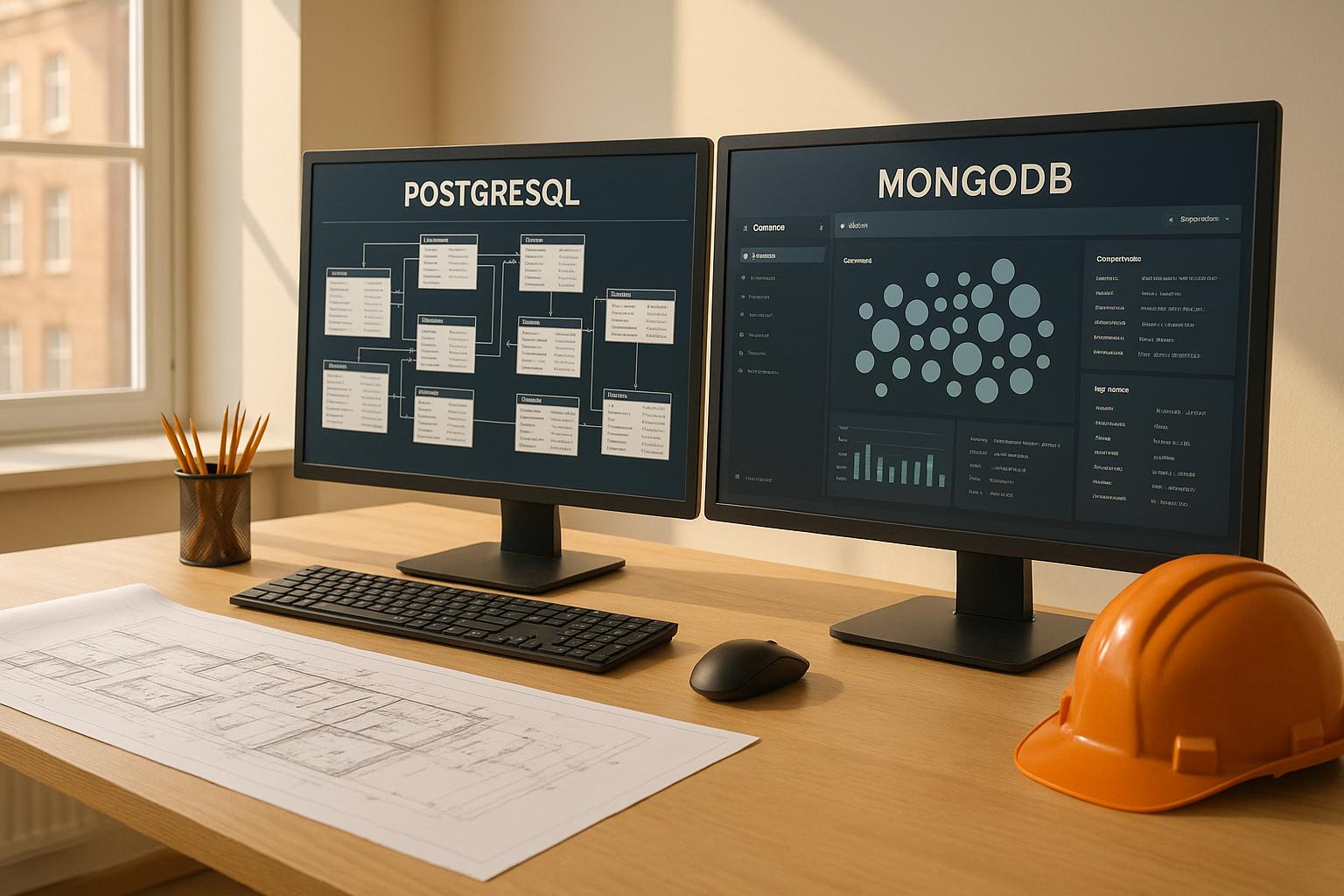Natural Language Processing in Construction: How AI Reads Project Documents
Taher Pardawala October 21, 2025
Natural Language Processing (NLP) is transforming how construction teams handle documents. From contracts to compliance reports, NLP automates time-consuming tasks, extracts critical information, and reduces errors. By processing unstructured data like technical drawings and legal terms, NLP ensures faster decision-making, better compliance, and improved accuracy.
Key Highlights:
- Document Automation: NLP analyzes contracts, blueprints, and reports, identifying key clauses, material specs, and compliance risks.
- Error Reduction: NLP delivers consistent results, minimizing costly mistakes in document analysis.
- Compliance Support: Flags potential regulatory issues in safety protocols, building codes, and environmental standards.
- Time Savings: Speeds up document review, enabling faster adjustments to timelines and budgets.
NLP is reshaping construction workflows by automating document-heavy processes, ensuring projects stay on track, within budget, and compliant with regulations.
AI in Construction – SpecGPT

Construction Documents That NLP Can Process
NLP is revolutionizing the way construction teams handle the vast array of documents generated during projects. With so much depending on the accuracy of these materials – like staying on schedule, within budget, and ensuring safety – streamlining their analysis is crucial. Among the most critical document types are technical drawings, legal contracts, and compliance reports.
Blueprints and Technical Drawings
Blueprints and technical drawings are more than visual guides – they’re packed with annotations, material details, dimensions, and metadata that are essential for executing projects, estimating costs, and maintaining quality. Extracting this data accurately can be challenging, but NLP tools make it manageable.
For example, NLP can pull out and organize details like door and window specs, finish materials, or structural requirements from architectural plans. This ensures that key information, often scattered across multiple sheets, is readily accessible.
Another standout feature of NLP is its ability to handle drawing revisions and updates. As designs evolve during a project, NLP can compare different versions of drawings, flagging changes in text like updated specifications or notes. This ensures that everyone involved is always working with the latest information.
NLP also simplifies material takeoffs – a traditionally time-consuming process. By extracting material specifications from drawings, NLP helps automate the creation of material lists, cutting down on manual work and reducing errors in ordering.
Contracts and Legal Documents
Construction contracts are often lengthy, complex, and interconnected with other agreements. They cover everything from payment schedules to change orders, and analyzing them manually can be overwhelming. NLP steps in to make this process more efficient.
The technology can identify and categorize key elements like payment terms, penalty clauses, critical dates, and scope definitions. This is especially helpful for construction managers juggling multiple contracts across various phases.
One of NLP’s most valuable applications in this area is risk identification. It can spot problematic clauses, such as unrealistic deadlines, ambiguous scope definitions, or terms that could lead to disputes. Catching these issues early allows teams to address them before they escalate.
Change order management is another area where NLP shines. Construction projects often involve scope changes, and NLP can analyze these changes, comparing them to the original contract terms to highlight potential conflicts or inconsistencies.
NLP also simplifies the management of payment and billing clauses, extracting details like milestone requirements and billing procedures. This ensures that financial obligations are met as outlined in the contract.
Compliance and Regulatory Reports
Regulatory documentation is another critical area where NLP proves indispensable. In the U.S., construction projects must adhere to a wide range of requirements, including building codes, safety standards, environmental regulations, and zoning laws.
NLP can quickly sift through lengthy compliance reports to pinpoint specific requirements for a project. For instance, when analyzing Environmental Impact Assessments (EIAs), it can extract obligations like mitigation measures, monitoring schedules, and reporting deadlines.
OSHA safety documentation is another area where NLP delivers value. It can categorize safety incidents, track training completion, and identify trends that might need management’s attention, ensuring compliance with federal safety guidelines.
For building code compliance, NLP can cross-reference multiple code sections to identify the specific requirements relevant to a project. This is especially useful when dealing with local building codes, which often have unique stipulations not covered by national standards.
Even permit applications and approvals benefit from NLP. These documents often include conditions that need to be met during construction. NLP can extract and organize these conditions, helping teams track compliance throughout the project.
Finally, NLP is a powerful tool for managing regulatory updates. It can analyze new requirements and compare them to existing project documentation, flagging areas where adjustments might be necessary. This ensures that projects stay aligned with the latest regulations.
NLP Methods and Tools for Construction Projects
These days, construction teams are turning to NLP (Natural Language Processing) to make sense of technical specifications and regulatory language buried in unstructured documents. It’s a game-changer for managing the overwhelming amount of information that comes with large-scale projects.
Core NLP Methods for Construction
Named Entity Recognition (NER) is a powerful tool for pinpointing key details in documents, such as material types, dimensions, dates, and locations. For example, when parsing a contract, NER can highlight mentions of steel grades, concrete specs, or delivery deadlines. This makes it easier to track essential project elements without sifting through pages of text.
NER is especially helpful when dealing with change orders and specifications. It can quickly locate and organize mentions like "structural steel" or "concrete foundation" across various documents, saving time and improving workflow.
Semantic search takes things a step further by understanding the meaning behind the text, not just matching keywords. This is particularly handy for interpreting technical drawings and specifications that describe the same concept in different ways. For instance, it can link terms like "reinforced concrete", "rebar-embedded concrete", and "steel-reinforced concrete", even if the exact wording isn’t consistent.
Text classification streamlines document organization by automatically sorting files into categories like contracts, safety reports, inspection records, or compliance documents. It can even identify details like the project phase or trade involved, making document management much more efficient.
Sentiment analysis helps construction teams prioritize issues flagged in inspection reports or safety documentation. By identifying notes with negative sentiment, teams can quickly focus on areas needing immediate attention, such as safety hazards or quality concerns.
These methods form the backbone of the tools that are transforming construction workflows.
NLP Tools and Frameworks for Startups
spaCy is a favorite among startups for its speed and precision when working with technical text. This open-source library is great at processing construction-specific terminology and offers pre-built models for tasks like entity recognition and text classification. It’s also highly efficient, processing thousands of pages quickly – essential for projects that generate mountains of documentation. Plus, it works seamlessly with multi-format documents, from PDFs to annotated CAD files.
NLTK (Natural Language Toolkit) is another option, offering more flexibility for custom NLP applications. While it requires more setup than spaCy, it’s ideal for startups looking to build niche solutions for proprietary document formats or specialized tasks.
GPT-based models are revolutionizing how construction companies handle document analysis. These models excel at summarizing complex contracts or breaking down technical specifications into plain language. Tools like OpenAI’s GPT models can process construction documents and provide insights that would typically require a seasoned expert to interpret.
For startups with tight budgets, cloud-based NLP services such as Google Cloud Natural Language API and Amazon Comprehend offer robust capabilities without the need for heavy infrastructure investments. These platforms can handle most document processing tasks while scaling effortlessly as the business grows.
Hugging Face Transformers provides access to pre-trained models that can be fine-tuned for specific needs. This makes it easier for smaller companies to leverage cutting-edge NLP technology without building models from scratch.
While choosing the right tools is important, adapting them to U.S.-specific construction standards is equally critical.
Processing U.S.-Specific Content with NLP
U.S. construction documents come with unique challenges that require tailored NLP solutions. For instance, imperial measurement units dominate U.S. projects. NLP systems must recognize and interpret measurements like "2×4 lumber", "16-inch on-center spacing", or "3,000 PSI concrete" to support tasks like automated takeoffs and material ordering.
Handling currency is another key consideration. Construction documents often reference costs in varying formats. NLP tools trained for these scenarios can normalize financial data for accurate budgeting and cost tracking.
Regulatory language poses its own hurdles. U.S. construction documents frequently cite standards like the International Building Code (IBC), Americans with Disabilities Act (ADA), and OSHA regulations. NLP systems can cross-reference these citations, flag compliance requirements, and ensure projects meet legal standards.
Regional terminology also varies widely across the U.S. What’s common in one state might be unfamiliar in another. Advanced NLP tools can be trained to recognize these regional differences and standardize terminology across projects.
Even date formats can be a stumbling block, as U.S. construction documents typically use MM/DD/YYYY. NLP systems must parse these correctly to avoid confusion with international formats, especially for scheduling and milestone tracking.
Lastly, local building codes often come with unique language and requirements that differ from national standards. NLP tools tailored for U.S. markets can identify these local nuances and extract relevant details for specific jurisdictions, ensuring projects stay compliant and on track.
sbb-itb-51b9a02
Automating Workflows and Reducing Errors with NLP
Construction projects churn out an overwhelming amount of paperwork, and manually managing it can throw schedules off track and inflate costs. This is where NLP (Natural Language Processing) steps in, transforming how documents are handled. By automating document analysis, NLP lets teams focus on actual construction work rather than getting bogged down by administrative tasks. Even better, these automated systems integrate smoothly with existing workflows, paving the way for practical applications like the ones below.
How NLP Transforms Construction Workflows
NLP’s ability to process documents efficiently opens up a world of possibilities for automation:
- Compliance monitoring becomes effortless. NLP-powered systems continuously review project documents against regulatory standards, flagging anything that’s out of line – like missing clauses or potential violations – before they turn into costly legal issues [1].
- Contract management gets smarter. With automated tracking, NLP keeps tabs on key deadlines and deliverables, sending out timely alerts when action is needed. This ensures nothing important slips through the cracks [1].
- Safety reporting goes proactive. By analyzing safety reports and incident logs, NLP identifies patterns, predicts risks, and suggests preventive measures to help avoid accidents before they happen [1].
- Field documentation gets faster. On-site workers can use voice-to-text tools to instantly record reports. This approach ensures accurate, real-time documentation without interrupting the flow of work [1].
- Document analysis is quicker and more consistent. NLP systems process construction documents faster and with greater reliability than manual reviews. They eliminate the inconsistencies of human interpretation, ensuring every document is analyzed thoroughly and uniformly [1].
Setting Up NLP for Startups and Growth-Stage Companies
Natural Language Processing (NLP) is transforming how startups and growth-stage companies handle document processing, offering efficiency and reducing errors. For construction startups, it’s essential to start small, demonstrate value, and then scale gradually. Many companies fall into the trap of trying to automate everything at once, which often leads to wasted time and resources. A phased approach, on the other hand, allows you to build trust in the technology while delivering measurable results.
Steps to Add NLP to Construction Projects
Identify your key document types and bottlenecks. Begin by listing contracts, blueprints, safety reports, compliance documents, and change orders. Focus on the documents that consume the most manual effort and cause delays.
Pick a manageable first use case. Start with a workflow that’s impactful but simple to automate. Contract review is a common choice because it involves structured text that NLP systems are well-equipped to handle. Avoid diving into complex technical drawings or highly specialized documents during the initial phase.
Find NLP tools tailored to construction needs. Look for platforms that can process industry-specific terminology and formats. Make sure the tools integrate seamlessly with your existing project management software and support the document types you prioritized.
Run a pilot project. Test the NLP system on one active construction project for 30 to 60 days. This trial period helps you identify and resolve issues without affecting your broader operations.
Track your results. Measure key metrics like processing times, accuracy improvements, and cost savings. These data points will be invaluable when scaling the system or securing additional funding.
Expand gradually. Once the pilot demonstrates success, roll out the system to additional projects one at a time. This step-by-step approach ensures smoother adoption, better team training, and continuous process refinement.
By following these steps, you can establish a solid foundation for integrating NLP into your operations.
How AlterSquare Helps with NLP Integration

For startups with limited resources, expert support can make all the difference in implementing NLP effectively. AlterSquare offers solutions designed to help construction startups integrate NLP without unnecessary complexity.
Quick start with MVP development. AlterSquare’s 90-day MVP program delivers a focused NLP solution tailored to your document processing needs. This fast-track approach ensures you start seeing results in months rather than years. The program also includes consultation to ensure seamless integration with your existing construction software and workflows.
Scalable AI-driven solutions. As your company grows, AlterSquare’s generative AI and chatbot capabilities can extend beyond basic document processing. Their custom machine learning models adapt to your unique document patterns and language, improving accuracy and efficiency over time.
Long-term product engineering. AlterSquare doesn’t just build your NLP system and leave. They provide end-to-end lifecycle support, ensuring your system can scale to handle growth – from a handful of projects to thousands – without sacrificing performance.
Bridging skill gaps with tech team augmentation. Most construction startups lack in-house AI expertise, which can make NLP implementation feel out of reach. AlterSquare’s engineers become part of your team, bringing specialized NLP knowledge combined with an understanding of the construction industry’s unique requirements.
With a structured delivery framework, AlterSquare ensures clear milestones and measurable progress, giving startups the confidence that their investment in NLP will yield tangible business results.
Conclusion
Natural Language Processing (NLP) is changing the way the construction industry handles documents, making the processing of contracts, blueprints, and compliance documents faster and more efficient. By replacing tedious manual reviews with automated systems, companies can quickly extract the critical information they need.
For startups and growing construction firms, adopting NLP offers more than just convenience – it creates a real competitive advantage. It boosts efficiency while helping to reduce risks.
The step-by-step implementation strategy outlined in this guide – beginning with a single document type, running pilot tests, and gradually scaling up – offers a clear and practical path for integrating NLP. This approach not only demonstrates measurable results but also builds confidence within teams. Metrics like shorter processing times, better accuracy, and cost reductions highlight the value of NLP and make a strong case for further investment and growth.
FAQs
How does Natural Language Processing (NLP) help ensure compliance with regulations in construction projects?
Natural Language Processing (NLP) is transforming how construction teams handle regulatory compliance by taking over tedious tasks and minimizing the chances of mistakes. With AI-driven NLP tools, project documents like contracts and compliance reports can be analyzed in record time. These tools pinpoint crucial details – such as regulatory requirements, deadlines, or missing clauses – so potential problems are caught early. This proactive approach helps teams address issues before they turn into costly legal or financial setbacks.
On top of that, NLP simplifies contract management by identifying key responsibilities and sending timely reminders for critical actions, like meeting deadlines or fulfilling specific obligations. By automating these tasks, construction companies can reduce disputes, steer clear of penalties, and keep projects running smoothly.
How can a construction startup start using NLP to improve document management?
To begin incorporating Natural Language Processing (NLP) into document management, construction startups can focus on a few practical approaches:
- Streamline document workflows: Leverage NLP tools to pull out key details, categorize, and summarize information from contracts, blueprints, and compliance documents. This not only cuts down on manual effort but also helps reduce errors.
- Spot risks and obligations: NLP can scan project documents to flag potential risks, unclear terms, or critical contractual responsibilities, giving teams the insights they need to make smarter decisions.
- Facilitate real-time collaboration: Platforms powered by NLP can simplify document sharing and feedback, ensuring everyone on the team stays updated with the most current information.
By implementing these methods, startups can boost productivity, lower risks, and set the stage for more successful construction projects.
Can NLP handle the specialized language and standards used in U.S. construction projects?
Yes, NLP can be fine-tuned to understand the unique language and standards that define U.S. construction projects. By training these systems on datasets specific to the construction industry, they can effectively identify and interpret terminology, syntax, and patterns commonly found in documents such as contracts, blueprints, and compliance reports.
What’s more, these systems can align with regional codes and regulations, enabling them to pull out key details, highlight potential risks, and help ensure compliance with U.S. standards. This capability makes NLP a valuable asset for improving accuracy, minimizing errors, and simplifying document workflows in complex construction projects.








Leave a Reply